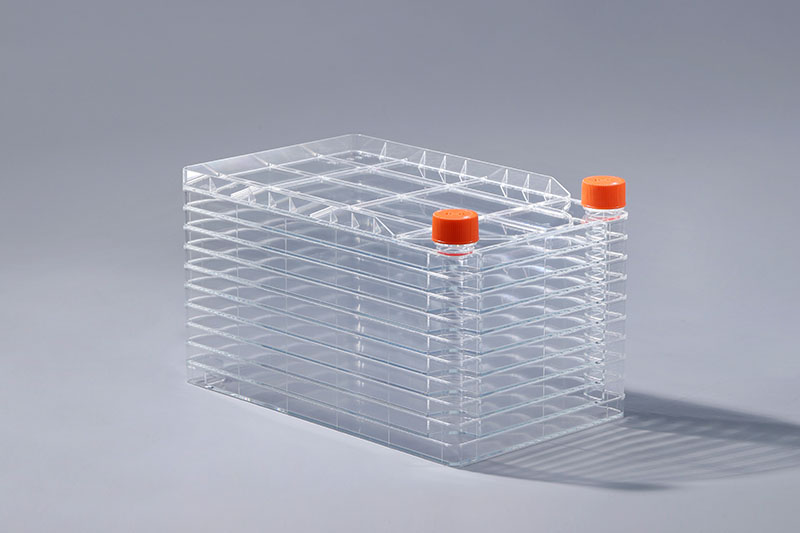Mycoplasma-kontamination er et hyppigt forekommende problem i grundforskning og industriel produktion. Når du bruger cellefabrikker til cellekultur eller storstilet industriel produktion, er mycoplasmaforurening også meget besværlig. Så hvad skal man gøre i denne situation?
Mycoplasma er en mikroorganisme, hvis størrelse er mellem bakterier og virus (minimum diameter 0,2um) og lever uafhængigt. Efter at mycoplasma har forurenet celler, bliver dyrkningsmediet muligvis ikke uklart. Det aflastes ved passage og medium udveksling, så det er nemt at blive ignoreret. Men nogle alvorlige tilfælde kan forårsage langsom celleproliferation og endda falde af fra cellefabrikken.
Hvis der opstår mycoplasma-kontamination, for ikke-vigtige celler, såsom celler i kultur, celler af WCB osv., kulturen og den anvendte mediet kan inaktiveres og kasseres. For vigtigere celler kan MRA-behandling, lægemiddelassisteret opvarmningsbehandling, brug af mycoplasma-specifikt serum, podning og sterilisering hos dyr, makrofagfagocytose og brug af mycoplasma-clearing medium anvendes til behandling.
Forebyggelsen af mycoplasma kontaminering er nøglen i brugen af cellefabrikker til cellekulturarbejde. Sandsynligheden for mycoplasma-kontamination kan reduceres ved at kontrollere miljøforurening, streng eksperimentel drift, sikre sterilitet af cellekulturmediet og udstyr og tilsætte passende mængde antibiotika til cellekulturmediet.
The FAI climbed 5.9 percent year-on-year in the first 11 months of 2018, quickening from the 5.7-percent growth in Jan-Oct, the National Bureau of Statistics (NBS) said Friday in an online statement.
The key indicator of investment, dubbed a major growth driver, hit the bottom in August and has since started to rebound steadily.
In the face of emerging economic challenges home and abroad, China has stepped up efforts to stabilize investment, in particular rolling out measures to motivate private investors and channel funds into infrastructure.
Friday's data showed private investment, accounting for more than 60 percent of the total FAI, expanded by a brisk 8.7 percent.
NBS spokesperson Mao Shengyong said funds into weak economic links registered rapid increases as investment in environmental protection and agriculture jumped 42 percent and 12.5 percent respectively, much faster than the average.
In breakdown, investment in high-tech and equipment manufacturing remained vigorous with 16.1-percent and 11.6-percent increases respectively in the first 11 months. Infrastructure investment gained 3.7 percent, staying flat. Investment in property development rose 9.7 percent, also unchanged.
 English
English



















































